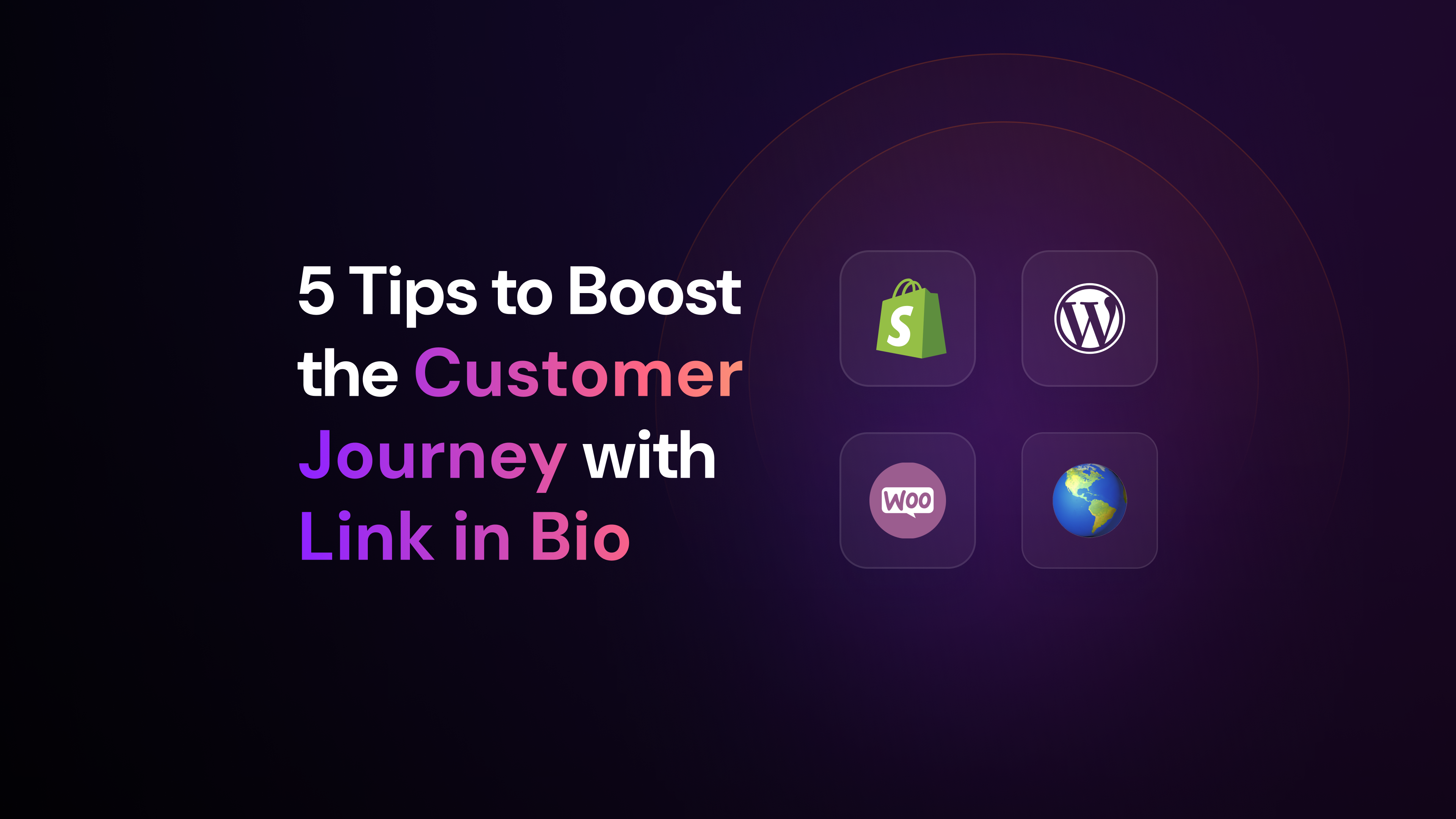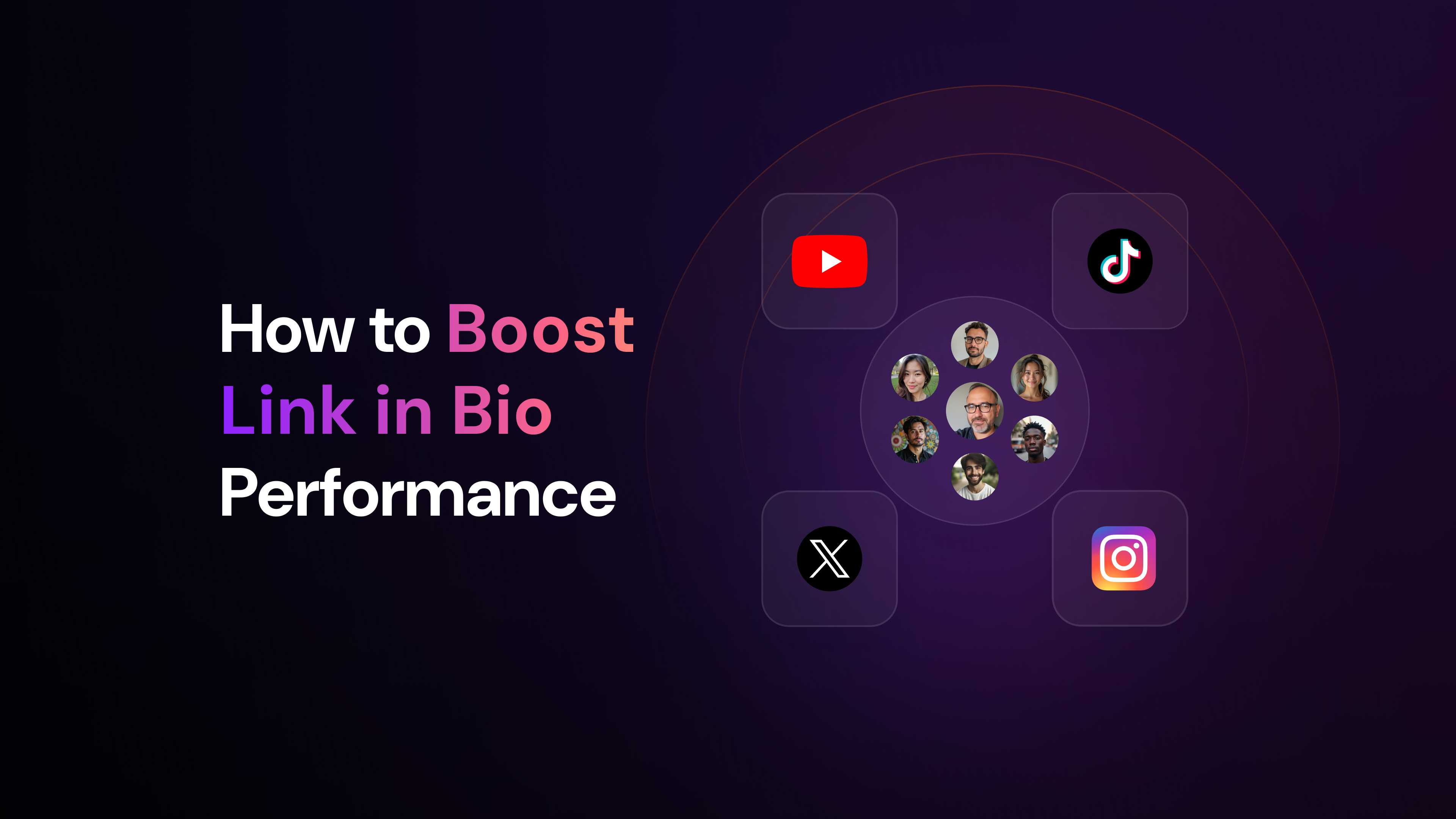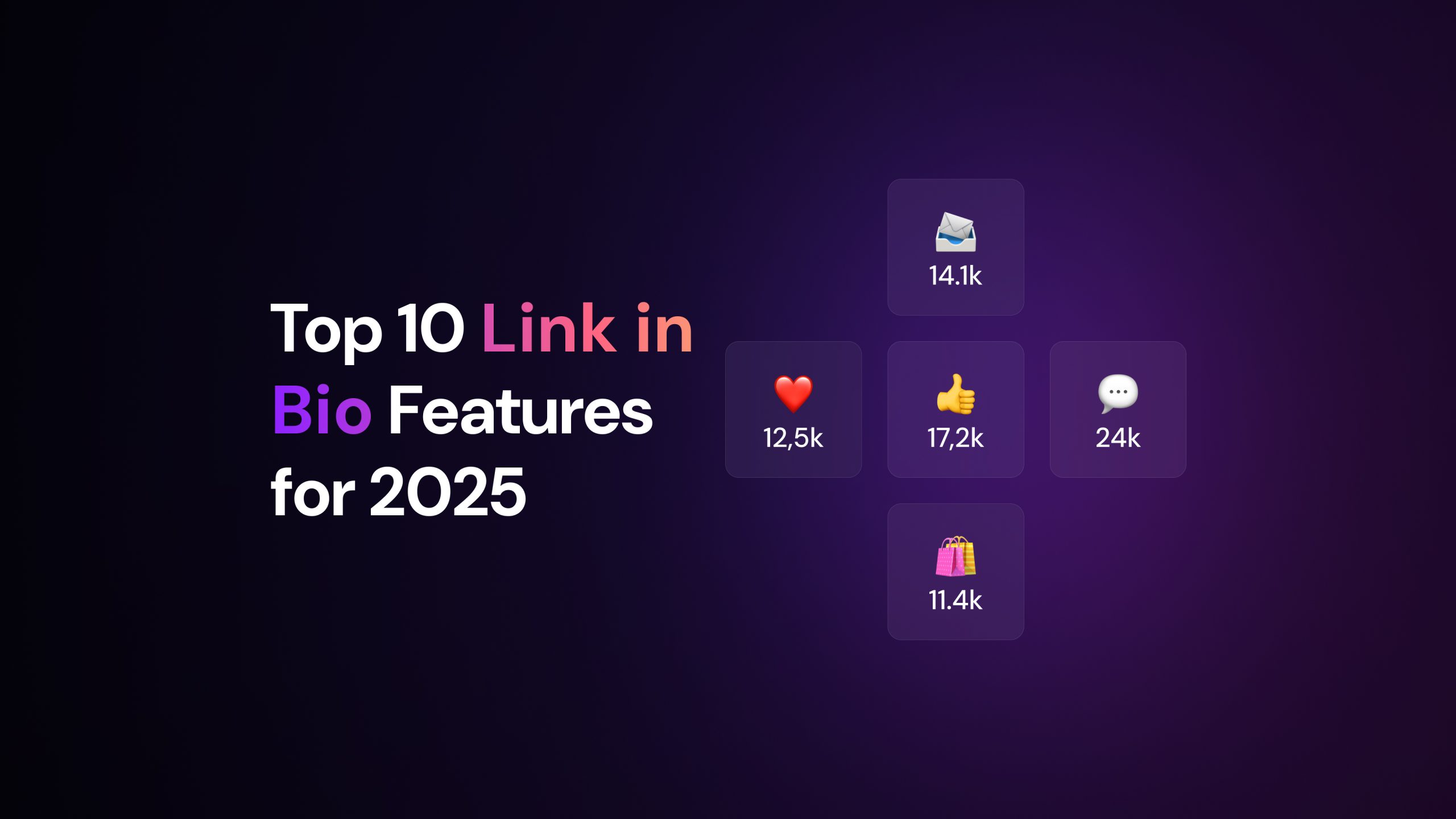Social media is a good place to start looking for potential customers, but social platforms have some limitations when it comes to transforming followers into customers. Instagram and TikTok, for example, only allow one link on a creator’s bio at a time, which isn’t enough to show a creator’s true potential.
This is where a link in bio tool can help. By creating a centralized hub, these platforms empower creators to showcase all of their content, products, and channels in a single, powerful getaway for customer engagement.
Let’s dive right in and explore how a link in bio tool can enhance customer journeys, drive traffic, and boost user experience while ensuring a seamless transition from social discovery to meaningful conversions.
In brief:
- Convert the single bio link into a centralized hub for all your essential content.
- Guide customers smoothly through the awareness, consideration, and conversion stages.
- Gain valuable insights through analytics to improve engagement and conversions.
- Enhance the mobile experience to keep social media audiences connected with your brand.
The Evolution of Social Media Customer Journeys
The digital marketing landscape has undergone a fundamental shift, with social media now serving as the primary gateway to customer engagement. Yet, platforms like Instagram and TikTok present a significant challenge by restricting businesses to a single clickable link in their profile. The single-link limitation creates a critical bottleneck in directing followers to various digital properties, from product pages to content hubs.
Enter link in bio tools, which have emerged as the bridge between social media engagement and owned digital platforms. Link in bio tools transform the traditional single-link constraint into an opportunity for creating seamless customer journeys. For more strategies on engaging your audience, consider our audience engagement guide.
Throughout this article, you’ll discover how these tools not only solve the link limitation problem but also enhance your ability to guide customers from social discovery to meaningful engagement on your own digital properties.
5 Ways to Improve the Customer Journey with Link in Bio Tools
1. Create a Centralized Digital Hub
Social media platforms present several challenges for creators and brands alike. In addition to holding only a single link on the bio, creators are limited to the formats allowed by each platform and often don’t have full access to important metrics and customer data.
A link in bio tool transforms these limitations into an opportunity by creating a centralized digital hub that houses all your essential touchpoints.
This hub works as a micro-site and content command center, bringing together different elements such as:
- Website homepage and key landing pages
- Product catalogs and featured items
- Blog posts, interactive learning tools, and educational content
- Email newsletter signups
- Special offers and promotional campaigns
- Event registrations
- Additional social media profiles and channels
- Community engagement initiatives
The strategic advantage of centralizing content goes beyond simple link collection. Offering different engagement options in a single location reduces friction in the customer journey and enhances brand discovery. When a follower clicks on the link in their bio, they are presented with a curated selection of the most relevant content, allowing them to choose their own path based on what they are looking for.
The centralized hub approach also supports the awareness stage of the customer journey by making it easier for potential customers to find solutions and learn more about your brand. Instead of hoping they will search through multiple channels to find what they need, you’re presenting a clear, organized pathway to all your digital offerings.
2. Optimize the Customer Journey
Link in bio tools play a vital role in guiding potential customers through each stage of their journey, from initial discovery to final conversion.
At the awareness stage, these tools provide multiple touchpoints for your audience to discover your content. You can showcase blog posts, educational resources, and branded content that help potential customers understand your solutions and value proposition.
During the consideration stage, your link in bio page becomes a trust-building platform. You can embed:
- Testimonials
- Case studies
- Rich media content, such as a WordPress live blog
These elements demonstrate your expertise and reliability. Maintaining consistent branding throughout reinforces your professional image and builds confidence in your offerings.
The conversion stage is where link-in-bio tools truly shine in driving action:
- Integrate e-commerce functionality directly into your landing page for immediate purchases, enhancing your e-commerce customer experience.
- Place lead capture forms strategically to collect contact information, and incorporate customer support features such as live chat to assist users in real-time.
- Provide direct links to product pages or booking systems for ready-to-buy customers, creating a personalized e-commerce experience.
Throughout each stage, these tools provide valuable analytics that help you understand how users interact with your content. These analytics enable you to optimize the journey continuously, identifying which content resonates most with your audience and pinpointing potential bottlenecks in the conversion process.
3. Enhance Customer Support with AI
Artificial intelligence has been a game changer on several fronts, and customer service isn’t any different. One of the most significant advantages of integrating AI with link in bio tools is offering customers a personalized experience through real-time chats, product recommendations, and instant support.
Platforms like Arena Link in Bio empower users to set up an AI Agent that reflects the brand’s unique look, feel, and tone of voice. With a personalized, real-time chat experience, creators and brands ensure their audience receives support around the clock. Whether it’s answering product questions, offering tailored recommendations, or guiding users to the right content, an AI Agent can come extremely handy when building your online presence.
This always-on, brand-consistent interaction enhances user satisfaction and increases conversion rates, making link in bio tools more than just a directory; they become dynamic, intelligent touchpoints that drive engagement and sales.
4. Offer a Mobile-First Experience
With most users accessing social media platforms through smartphones, mobile optimization is no longer just a “nice to have” feature: it’s essential. The responsive design maintains engagement and reduces friction in the customer journey.
When searching for a link in a bio tool, it is essential to verify that the platform is compatible with various screen sizes and devices. This ensures your content looks good regardless of where it is accessed from. Fast loading times on mobile networks keep users engaged, preventing the frustration of slow-loading pages that often lead to abandonment.
Mobile-friendly features include easy-to-tap buttons with sufficient spacing to prevent accidental clicks and content layouts that dynamically adjust to provide optimal viewing on smaller screens. The text should remain readable without zooming, and images must scale appropriately to maintain visual appeal while ensuring quick load times.
Prioritizing mobile optimization allows link in bio tools to create a natural extension of the social media experience, essential for maintaining audience attention and encouraging deeper interaction with your brand’s digital offerings.
5. Leverage Insights to Make Data-Driven Decisions
One of the most powerful yet overlooked benefits of link in bio tools is their ability to collect and present valuable customer data. Every click, scroll, message, and interaction on your link in bio page offers actionable insights into user behavior, preferences, and intent.
By leveraging these analytics in strategic decision-making, creators and brands can take informed business actions that elevate content strategy and enhance the overall customer experience. Through analytics dashboards, it is possible to identify which links are most frequently clicked, what type of content drives the most conversions, and which products or offerings drew your customers’ attention.
Advanced platforms like Arena Link in Bio often include built-in analytics dashboards that break down performance metrics such as:
- Click-through rates by content type
- Device and location data
- Time spent on specific links or pages
- Conversion tracking tied to specific campaigns or touchpoints
These insights can be used to:
- Refine messaging to better resonate with your audience
- Reorder or highlight links based on engagement trends and strategic priorities
- Arrange A/B tests for visuals and headlines to boost effectiveness
- Personalize offers or CTAs for specific audience segments
By continuously analyzing and iterating based on real data, your link in your bio becomes a strategic tool that evolves with your audience, ensuring every interaction is optimized for impact.
Conclusion
Link in bio platforms have evolved beyond simple link aggregators into powerful tools for optimizing customer journeys. By creating a microsite that works as a hub for multiple online destinations, these tools effectively bridge the gap between social media presence and owned digital properties.
The strategic value of a link in bio tool extends beyond convenience. These tools enable real-time content updates, support multiple conversion opportunities, and maintain brand consistency across touchpoints.
Ready to see the impact of an effective brand community on your bottom line? Take control of your customer journey today by implementing a link in bio tool that aligns with your brand’s needs.
Sign up now and start leveraging our powerful Arena Link in Bio features to boost customer engagement and retention.



